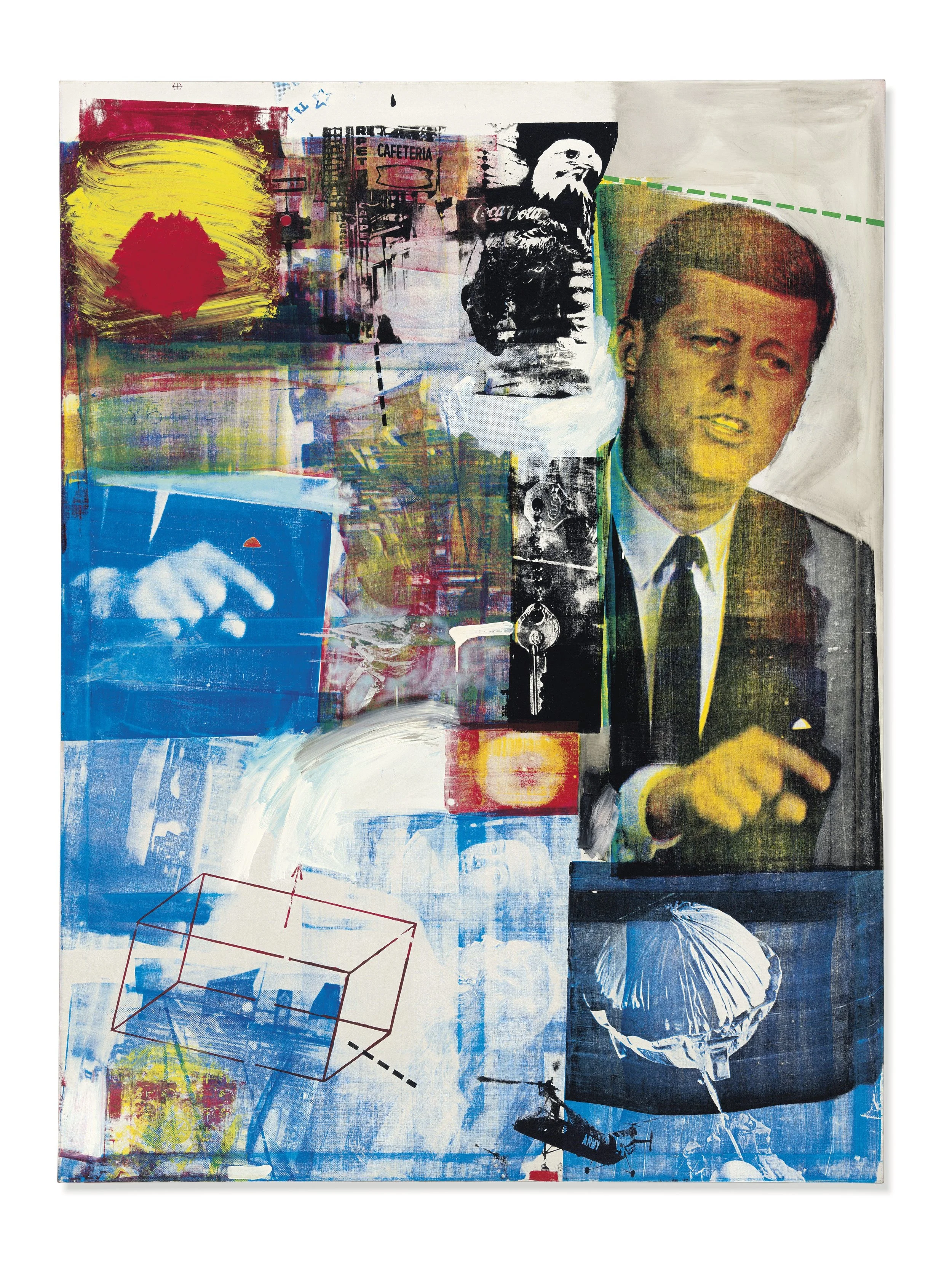Taking Venice (2023) | Dir. Amei Wallach
Recreation of the 1964 transport of Robert Rauschenberg’s work in Venice canals for exhibition at the Venice Biennale. Still from Taking Venice.
Written by: Belle McIntyre
Presented as a little known behind-the-scenes full on campaign orchestrated around the 1964 Venice Biennale to insure that the US, one of the most recent participants, could establish their bona fides in the contemporary art world. It was the height of the Cold War and the US was in an upbeat period under the presidency of John F. Kennedy and aiming to spread soft power and influence globally through the arts. (Cynics called it colonizing). In the US Pop Art was making huge and vibrant waves in the art world and taking a lot of attention from France as the center of the art world. Andy Warhol, Roy Lichtenstein, Jim Dine, Jasper Johns and Robert Rauschenberg were making radically new work and broadening the notions of what could be considered art. The galleries were enthusiastically embracing the new art and selling it to a voracious group of new collectors. This new art was quintessentially American.
Transporting Robert Rauschenberg’s Express at the XXXII International Biennale of Art Exhibition, Venice, 1964. Photo Ugo Mulas © Ugo Mulas Heirs. All rights reserved.
What this film focuses on is the unusual collaboration between art world heavyweights, in the Kennedy administration, and the State Department. Leo Castelli was Robert Rauschenberg’s dealer and was well established in the gallery pantheon. Alice Denney, wife of deputy director of State Department Bureau of Intelligence and Research, became vice-commissioner of the US Pavilion. She selected Alan Solomon to be US Biennale Commissioner. He was a smooth operator who knew his way through the art world and how to work with established hierarchies. This collaboration brought immense power and influence to the selection process. It was they who determined what artists would be shown and who would get. top billing. And they unanimously chose Robert Rauschenberg to be standard bearer and potential winner of the Golden Lion Award. They also opened a take no prisoners campaign to maximize Raushenberg’s exposure.
Robert Rauschenberg, Buffalo II, 1964, © Robert Rauschenberg Foundation
He was arguably the most difficult choice, given his predilection for including found objects, (junk), dead animals, and constructions which resisted categorization as either paintings or sculpture. He also felt no need to explain his work, preferring to let it speak for itself. He has an impish sense of humor and an upbeat manner, and is not bothered by negative reactions to his work. The film does spend a little time examining Rauschenberg’s life and work: including his long relationship with Jasper Johns, and multiple collaborations with John Cage and Merce Cunningham. Rauschenberg is not given much in depth attention, but is revealed to be thoroughly engaged with making art with no evident questioning of its inevitability. He seems to be a willing pawn in a plan which will elevate his career and that of Pop Art in general.
Robert Rauschenberg in front of his silkscreen painting Express at the XXXII International Biennale of Art Exhibition, Venice, 1964. Photo Ugo Mulas © Ugo Mulas Heirs. All rights reserved.
Mainly, however, the focus is on the machinations of the power brokers tasked with a single goal, the Golden Lion. They were bold and audacious buttressed by the knowledge of the support and protection of the State Department. The unanswered question is would same result have happened without all of the backroom shenanigans? We will never know, but it is a fascinating story well told and insightful.











